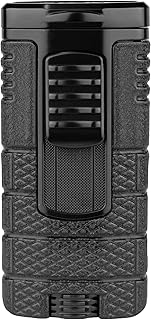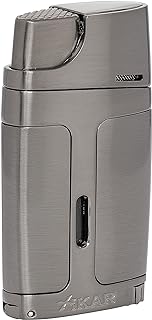1. Safety First:
* Don't try to light the lighter! A fuel leak makes it extremely dangerous.
* Work in a well-ventilated area. Butane is flammable and can build up dangerous levels in enclosed spaces.
* Wear safety glasses. Fuel can splash or be ejected during the repair process.
2. Identify the Source:
* Inspect the valve: Look for any damage, cracks, or debris around the valve.
* Check the seal: The o-ring that seals the valve can deteriorate over time.
* Look for cracks or leaks: Examine the lighter body for any cracks or signs of leaking fuel.
3. Attempt to Fix the Leak (If Possible):
* Clean the valve: Gently use a small, soft brush or cloth to remove any debris or buildup around the valve.
* Tighten the valve (carefully): Use a small wrench or pliers to gently tighten the valve. Be careful not to overtighten, as this could damage the valve.
* Replace the o-ring (if necessary): If the o-ring is damaged or worn, replace it with a new one. You can find replacement o-rings at most lighter repair shops or online.
* Consider a professional repair: If you're not comfortable working on the lighter yourself, take it to a professional lighter repair shop.
4. Empty the Fuel (Important):
* Do this after any repairs, or if you can't fix it. Don't leave fuel in a leaking lighter.
* Follow instructions for emptying butane lighters carefully. This often involves holding the lighter upside down and releasing fuel until it's empty.
5. Disposal:
* Dispose of old fuel safely. Do not pour it down the drain or leave it in an open container.
* Dispose of the lighter if it's beyond repair. Check local regulations on disposing of lighters.
Important Notes:
* Never use a lighter with a fuel leak. This is a fire hazard and could cause serious injury.
* Check for recalls: There have been occasional recalls for lighters due to safety issues. Check Xikar's website or contact them directly.
* Proper maintenance: Regularly clean your lighter and replace the o-ring to prevent fuel leaks in the future.


